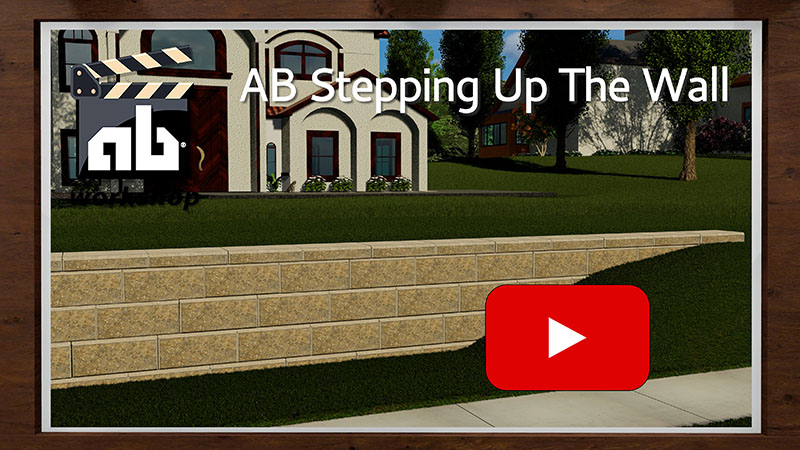Building Retaining Wall Step-Ups into the Slope
If you are building with AB Fieldstone retaining wall system, go to AB Fieldstone installation
For AB, AB Aztec & AB Europa Walls
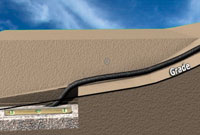
Compact and level wall rock

Excavate and compact next step-up

Compact and level wall rock
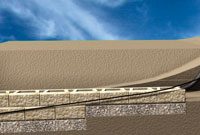
Install retaining wall step-up
- When building step-ups, begin the base course at the lowest wall elevation.
- Dig a base trench that is 24 in. (600 mm) wide.**
- The depth of the trench is determined by allowing for 6 in. (150 mm) plus an additional 1 in. (25mm) for each 1 ft. (300 mm) of wall height for the amount or buried block that is needed. The trench also needs to extend into the slope far enough to bury one full block.**
- If a slope is present below the wall, contact a local engineer for assistance.
- Compact and level the base trench making a minimum of two passes with a plate compactor.
- Place the drain pipe at the lowest possible point toward the back of the trench.
- Place a minimum of 6 in. (150 mm) of wall rock in the base trench and check for level. Compact the base material, making a minimum of two passes with a plate compactor.
- Excavate the second step up making sure to accommodate for the base material and buried block. Compact and level the step-up area.
- Place the base course of blocks on the base material and check for level.
- Fill the hollow cores and 12 in. (300 mm) behind the block as well as the base area of the next step up with wall rock then backfill with infill or approved on-site soils. Make sure that the blocks and the base of the next step-up are level.
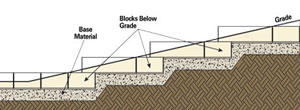
Step-up retaining wall into slope
- Compact the wall rock directly behind the block and the next step-up area a minimum of two passes with a plate compactor. Repeat these steps to the top of the grade.
- Keep in mind the block at each step-up must be completely buried to maintain the proper base depth and to prevent wall failure due to erosion.
**For walls under 4 ft. (1.2 m) dig the base trench 18 in. wide (460 mm) and 4 in. deep (100 mm) plus additional to account for the amount of buried block needed.
For AB Fieldstone Walls

Install step up with fieldstone 824 assembly
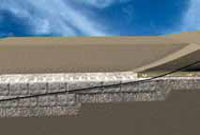
Backfill with wall rock
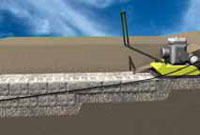
compact retaining wall for next step up
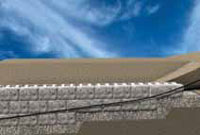
Continue to top of slope
Building Step-Ups with AB Fieldstone 824 Assembly
Step-ups are most stable when the upper block has sufficient bearing on the lower block. The length of the 824 assembly (if available) provides the flexibility to make this block ideal for this application. If using the 812 assembly, use the instructions listed above.
- Build the wall up to the step-up location. Excavate for next step up.
- Install wall rock, level and compact. Compaction of the base material where the step-up will be installed is very important to ensure the wall does not settle. Make a minimum of 2 passes with a plate compactor.
- Create the step-up by placing an AB Fieldstone 824 assembly so it is installed on at least 6 in. (150 mm) of the block below and spans out onto the base material creating the next course. Install an AB Fieldstone 812 assembly next to the 824 assembly to complete the step up.
- Fill the hollow cores and 12in. (300 mm) behind the block as well as the base area of the next step up with wall rock then backfill with infill or approved on-site soils. Make sure that the blocks and the base of the next step-up are level.

Step-up retaining wall into slope with 824 assembly
- Compact the wall rock directly behind the block and the next step up area a minimum of two passes with a plate compactor.
- Repeat these steps to the top of the grade.
- Keep in mind the block at each step-up must be completely buried to maintain the proper base depth and to prevent wall failure due to erosion.


